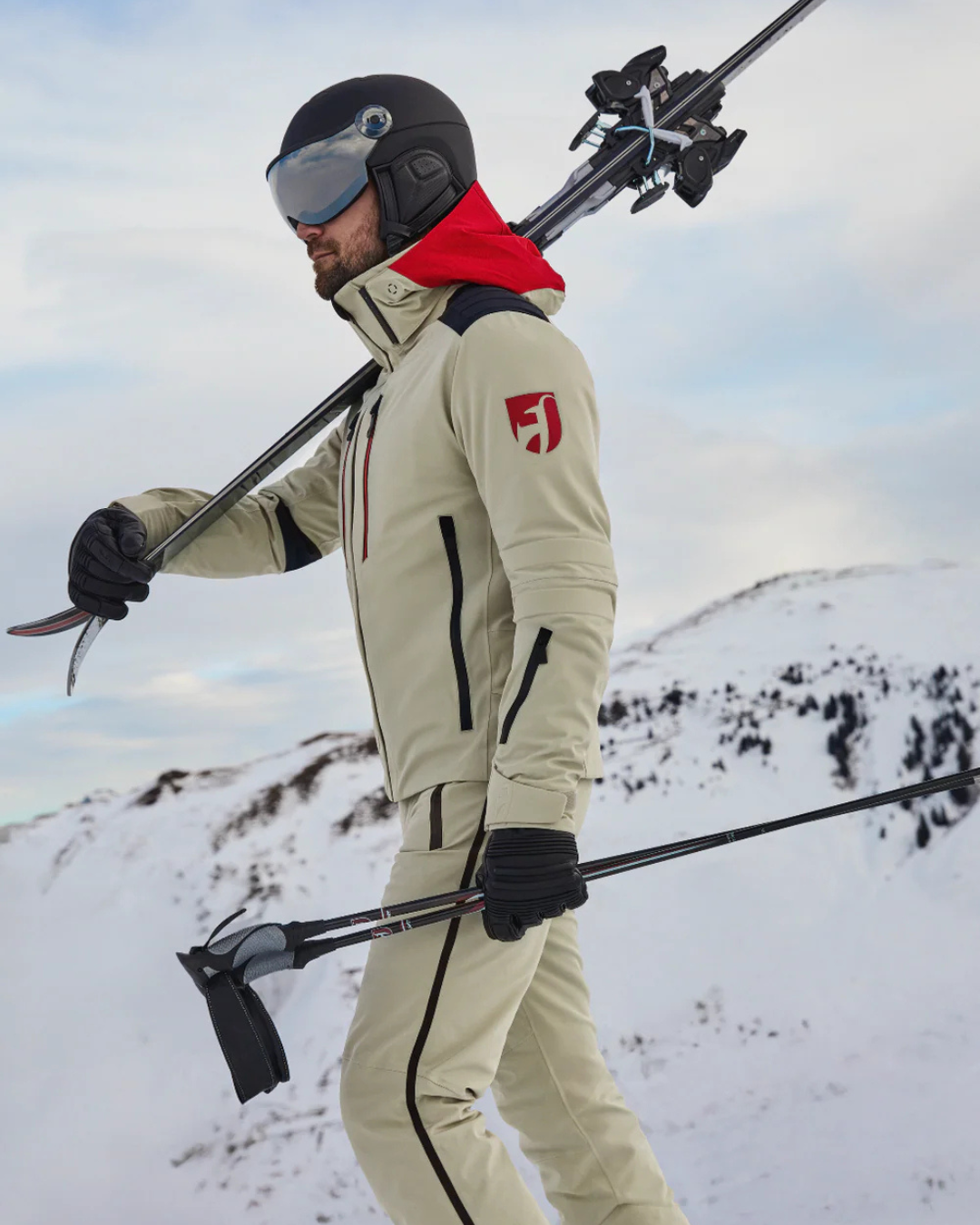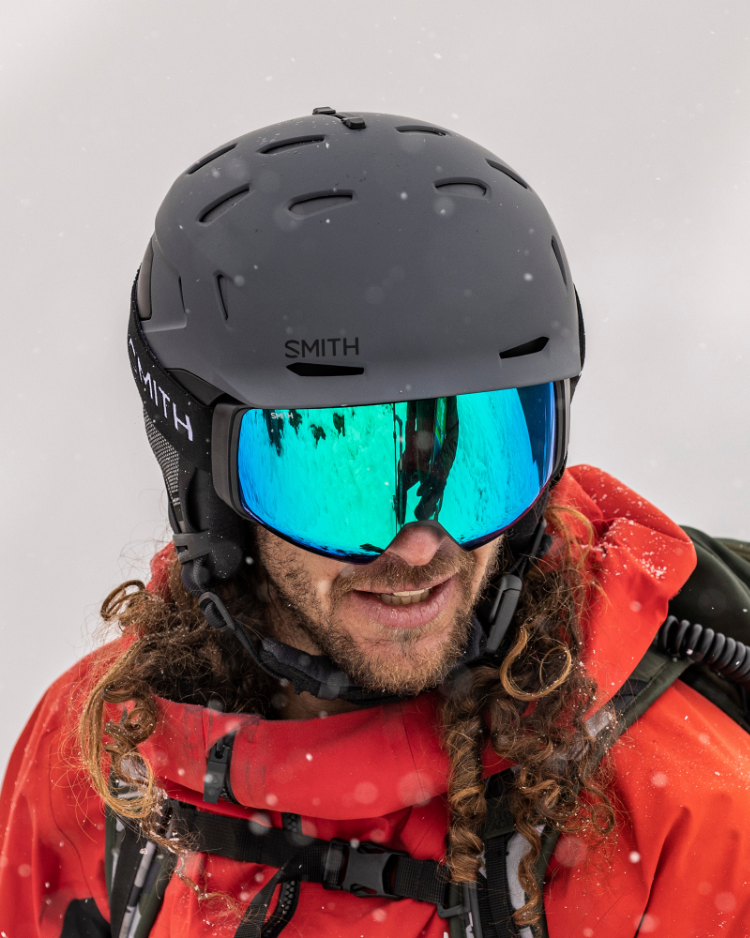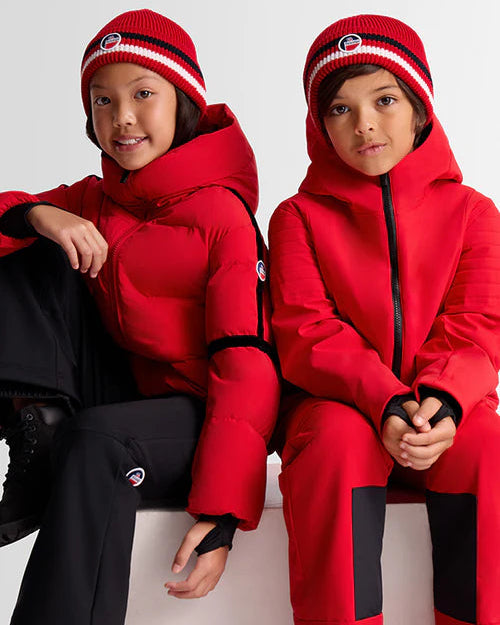Regardless of your perceived skill level on the slopes, the value of a ski helmet is unparalleled. Snow Sports have experienced exponential growth in popularity in the last few decades, and technological developments have kept pace with this growing popularity to ensure that skiers and snowboarders can equip themselves with the safest, most comfortable and effective ski apparel possible. You no longer have to make do with uncomfortable helmets that seem to pull you down with their weight, as helmet manufacturers continuously aim to surpass each other by producing the lightest, strongest and most comfortable helmet options in the market. Together we shall explore some of the most innovative technologies incorporated into SnowScene’s helmet range, and help you decide what you want from your next ski helmet.
Multi-Directional Impact Protection System (MIPS).
When researching the safest ski helmets on the market, it would be difficult to avoid this acronym. MIPS has established itself as one of the premium safety features available in helmets globally, ranging from ski helmets to cycling helmets. MIPS, which stands for Multi-Directional Impact Protection System, is a technology that is being gradually included in a large range of ski helmets here at SnowScene. The MIPS technology offering is made up of three key features; an interior foam liner, the Elastomeric Attachment System and the low friction liner. The foam liner, which is felt against the wearer’s head, is attached to the low friction liner through the use of the Elastomeric Attachment System. In the event of an impact, these features allow the internal foam liner to rotate within the external hard shell of the helmet. This rotational capability reduces the rotational force applied to the brain during the collision. Extensive research has indicated that this reduction of rotational force application to the brain lessens the trauma experienced in the inner portions of the brain, and greatly reduces the risk of brain injury. This provides the wearer with the reassurance that in the event that they are involved in an incident, they will be utilising one of the best protection systems on the market.
Koroyd
In the quest to produce the lightest and strongest helmets on the snow market, brands have extensively researched into alternatives to foam liners for their helmets. Koroyd is one technology that serves to replace the traditional foam protection system found in many helmets today. Koroyd is a brand that has developed a protection system that utilises tubes to increase the safety of a helmet while reducing weight. This is achieved by welding numerous tubes together and forming the lining of the helmet from this material, giving the appearance of an open-weave structure. This structure is highly effective in evenly absorbing force in the event of an impact, thus minimising the transfer of energy from the ground to the wearer’s head. This is achieved during both direct and angled impacts and Is able to reduce the risk of suffering any brain injury through allowing the Koroyd system to ‘crumple’ whilst absorbing the force of the impact, instead of allowing your head to experience this force. The open structure of Koroyd also makes the helmets it is incorporated into incredibly light, as well as highly breathable, which make them easy and desirable for the wearer to keep on for hours at a time.
BOA Fit System
When trying on a helmet for the first time, it is possible that it is ever so slightly loose and is moving around your head more than you are comfortable with. The integration of a BOA Fit System by the manufacturer allows you to customise the fit of your helmet to your personal preferences. The BOA Fit System functions by expanding or contracting a band within the hard shell of the helmet to tighten or loosen the fit of the helmet. This is performed by turning the BOA Fit dial at the rear of the helmet to the right to tighten or the left to loosen to find your ideal fit. The BOA Fit System is manufactured to be lightweight and non-intrusive for the wearer so that comfort and wearability are not impacted. The BOA Fit System also allows you to minorly adjust the fit of your helmet depending on whether the weather conditions insist that you wear a thin balaclava or skull cap under your helmet for warmth. Whatever the conditions you are about to face, your BOA Fit System will ensure that your helmet is not going anywhere you do not want it to go.
Venting
Just as important as an effective ski jacket, your helmet is integral in moderating your body temperature. The regulation of airflow through and out of your helmet is key in ensuring that you do not overheat on clear, blue bird days whilst having the capacity to keep you warm on the harshest conditions that mountain may have to offer. Air venting is a feature found in a high majority of snow helmets and they serve to moderate the airflow around your head and neck. While many entry-level helmets will have stationary vents, premium helmet options will incorporate adjustable vents to allow the wearer to adjust the airflow to their personal specifications. By opting to open your vents a little, or the entire way, you can find the orientation that works best for you and allows you to get everything out of your day on the slopes.
Check out our range of Ski and Snowboarding helmets online today - SHOP NOW
Read more

Snowscene prides itself by stocking only premium quality products and snow brands. For us, it comes down to ‘trust’. You have to trust the product to live up to the rigours and challenges of long d...

Snowscene prides itself by stocking only premium quality products and snow brands. For us, it comes down to ‘trust’. You have to trust the product to live up to the rigours and challenges of long d...







